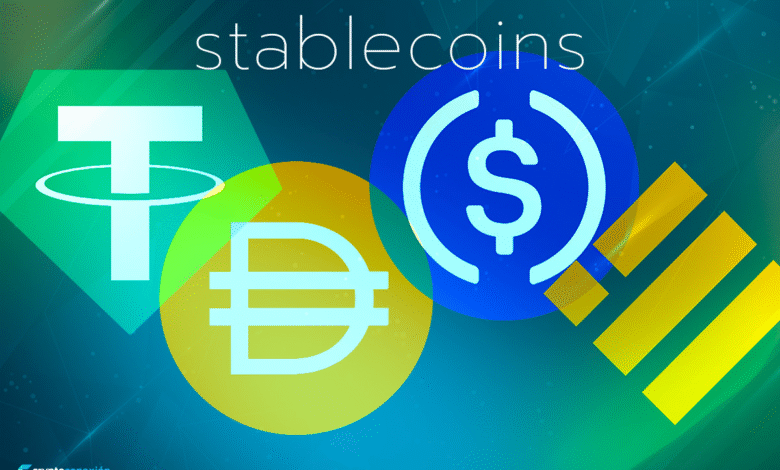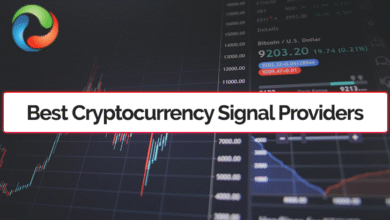Stablecoins: 90% of Industry Engaging with New Financial Norms

Stablecoins are rapidly emerging as a pivotal component of the contemporary financial landscape, reshaping both digital payment systems and traditional banking. According to a recent Fireblocks report, these digital assets have accounted for nearly half of the transaction volume on their platform in 2024, showcasing their crucial role in enhancing efficiency in cross-border payments. As 90% of industry participants actively engage with stablecoins, it’s evident that stablecoin adoption is gaining momentum, supported by an increasing demand for speed and cost-effectiveness in transactions. With over 300 banks collaborating on this innovative frontier, the stablecoin volume processed by Fireblocks represents a staggering 15% of the global market. This trend not only reflects a broader acceptance of cryptocurrencies but also indicates a transformative shift towards modern financial solutions driven by enhanced regulatory clarity.
Digital currencies known as stablecoins have become increasingly significant in the evolving financial ecosystem. Recent findings emphasize that these assets facilitate rapid and cost-effective transactions, especially in the realm of international money transfers. As organizations gear up for wider acceptance, many are optimizing their platforms for the integration of these cryptocurrencies, leading to a surge in use cases. With the growing importance of such digital assets, the mode of payment is shifting towards more streamlined and dependable options. This trend underlines a larger movement in the financial sector aimed at leveraging technology for efficient monetary exchanges.
The Rising Importance of Stablecoins in Payment Systems
Stablecoins have emerged as a pivotal component of modern financial transactions, providing a bridge between traditional currencies and digital assets. According to the recent Fireblocks report, stablecoins accounted for nearly 50% of all transaction volume on their platform in 2024. This substantial figure underscores the vital role that stablecoins play in enhancing the efficiency and reliability of digital payment systems. Their ability to minimize volatility while maintaining usability for transactions has made them a preferred option for many businesses and financial institutions.
Additionally, the growing adoption of stablecoins is reshaping how transactions are conducted on a global scale. With the increasing number of companies recognizing the advantages of utilizing stablecoins, traditional banking systems are facing pressure to adapt to these new digital payment frameworks. The report indicates that 90% of industry players are actively engaging with stablecoins, reflecting a significant shift towards integrating these digital currencies into mainstream financial operations.
Stablecoin Adoption and Cross-Border Payments
Cross-border payments have traditionally been fraught with challenges including high fees and lengthy settlement times. However, the integration of stablecoins into these transactions is revolutionizing the industry. The Fireblocks report highlights that a substantial portion of the respondents utilize stablecoins for international transactions, emphasizing their speed and cost-effectiveness. This shift not only enhances the customer experience but also offers businesses a competitive edge in an increasingly global market.
Moreover, as regulatory frameworks around stablecoins become clearer, many firms are ramping up their infrastructure to support stablecoin usage. The report notes that 86% of businesses are prepared for stablecoin adoption, a clear indication of the future trajectory of financial transactions. With stablecoin volume expected to grow, the enhancement in cross-border payment systems will likely accelerate, making transactions quicker and more affordable for users worldwide.
Fireblocks Report: The Future of Digital Payment Systems
The ‘State of Stablecoins 2025’ report from Fireblocks provides valuable insights into the future landscape of digital payment systems. As the report points out, a significant percentage of companies are now focused on the adoption of stablecoins, which are seen as essential for modernization efforts in payment infrastructure. The integration of stablecoins within payment systems not only supports faster transaction times but also aligns with the need for regulatory compliance and operational transparency.
Furthermore, the way digital payment systems are evolving is heavily influenced by technological advancements and consumer expectations. With 300 banks and payment providers currently onboard Fireblocks, the collaborative effort suggests a strong industry consensus towards the need for robust stablecoin solutions. This partnership approach could lay the groundwork for a more interconnected and efficient financial ecosystem, where stablecoins act as the cornerstone of future transactions.
The Role of Regulatory Clarity in Stablecoin Adoption
Regulatory clarity is crucial for the widespread adoption of stablecoins across the financial landscape. The Fireblocks report emphasizes that many firms are re-evaluating their strategies in light of new regulations that could impact stablecoin usage. This clarity not only helps mitigate risks associated with compliance but also instills greater confidence among businesses in incorporating stablecoins into their payment systems.
As governments and regulatory bodies worldwide begin to recognize the benefits of stablecoins, we can expect to see a more structured approach to their integration into existing financial frameworks. This positive trend is likely to foster innovation and encourage firms to adopt stablecoin solutions for a variety of applications, further solidifying their role in enhancing digital payment systems.
Challenges and Opportunities in Stablecoin Volume
While stablecoins present numerous opportunities for more efficient cross-border transactions, there are challenges that need to be addressed to fully realize their potential. The Fireblocks report indicates that as many as 90% of industry participants are currently engaging with stablecoins. However, achieving high stablecoin volume requires overcoming hurdles such as market volatility, user education, and infrastructure readiness.
On the flip side, these challenges also present significant opportunities for innovation. Companies that can develop solutions to enhance stablecoin usability and trust are likely to gain a substantial competitive advantage. As the market evolves, organizations that strategically navigate these challenges could improve their position within the rapidly changing landscape of digital payment systems.
Transforming Financial Transactions with Stablecoins
The transformation of financial transactions through the adoption of stablecoins is a key takeaway from the Fireblocks report. With stablecoins facilitating up to 15% of global transactions and supporting over 35 million transactions monthly, their impact on the financial ecosystem is undeniable. Businesses leveraging stablecoins are finding new avenues to cut costs and streamline operations, essential in today’s fast-paced economic environment.
In addition, the shift towards digital currencies is also driving innovation. Companies are exploring novel applications of stablecoins, from remittances to real-time settlements, showing the flexibility that these digital assets can bring. As consumers increasingly turn to digital financial solutions, stablecoins are well-positioned to become a cornerstone of future transaction methods.
The Impact of Stablecoins on Global Finance
Stablecoins are not just changing the dynamics of individual transactions; they are also influencing the global financial landscape. The Fireblocks report points to a broader trend in which stablecoins are becoming integral to financial institutions’ operations, emphasizing their role in cross-border payments. This adoption is particularly significant as businesses seek to navigate the complexities of international markets.
As firms rely more on stablecoins for global transactions, the potential for a paradigm shift in traditional banking practices becomes apparent. Established financial systems may need to adapt quickly to incorporate stablecoin technology, which can lead to increased efficiency and lower transaction costs. The future of global finance is likely to be heavily intertwined with the rise of stablecoins, requiring all participants to prepare for this transformation.
Stablecoins as a Catalyst for Financial Innovation
Stablecoins are emerging as a catalyst for financial innovation, as highlighted by the engagement rates detailed in the Fireblocks report. With 90% of industry participants actively utilizing stablecoins, it is evident that financial institutions are looking for ways to enhance their offerings and meet the evolving demands of consumers. This drive towards innovation is essential in a world where speed and efficiency are paramount.
Moreover, the continuous exploration of stablecoin applications can lead to the development of new financial products and services. As companies look for avenues to improve their transaction capabilities, leveraging stablecoins could result in a more agile and responsive financial ecosystem. The potential for creativity and advancement in stablecoin integration is vast, making them a central focus for future financial solutions.
Conclusion: The Future of Stablecoins in Payments
In conclusion, the findings of the Fireblocks report underscore the remarkable growth and potential of stablecoins within modern payment systems. As more companies acknowledge their value, stablecoin adoption is set to become a vital component of the financial landscape, enhancing cross-border transactions and providing a reliable alternative to traditional payment methods.
The trajectory of stablecoins will likely continue to evolve, driven by regulatory clarity and a collective push towards digital transformation in finance. With a readiness for widespread implementation among firms and a proven track record of transaction volume, stablecoins are poised to redefine how value is exchanged globally, forging a new path for the future of payments.
Frequently Asked Questions
What is driving stablecoin adoption in the financial industry?
The rapid adoption of stablecoins in the financial industry is primarily driven by their effectiveness in cross-border payments. According to the Fireblocks report, 90% of industry participants engage with stablecoins, valuing their speed and cost-efficiency over traditional payment methods. Additionally, regulatory clarity and a strong demand for modern digital payment systems are fueling this trend.
How much stablecoin volume does Fireblocks process?
Fireblocks processes approximately 15% of the global stablecoin volume, as highlighted in their recent report. This volume is reflective of the growing use of stablecoins, which accounted for nearly half of the transaction volume on their platform in 2024.
What are the benefits of using stablecoins for cross-border payments?
Stablecoins offer significant benefits for cross-border payments, including lower transaction costs and faster processing times compared to traditional payment methods. The Fireblocks report indicates that 90% of industry participants utilize stablecoins for these transactions, showcasing their growing popularity in enhancing digital payment systems.
What factors are influencing the shift toward stablecoin adoption?
The shift toward stablecoin adoption is influenced by various factors, including regulatory clarity and the operational readiness of financial infrastructure. The Fireblocks report notes that 86% of firms are prepared for stablecoin integration, indicating a movement from pilot programs to full-scale adoption in response to market demands.
What role do stablecoins play in modernizing payment systems?
Stablecoins play a crucial role in modernizing payment systems by facilitating quicker and more efficient transactions. The State of Stablecoins 2025 report by Fireblocks highlights their importance, as stablecoins contribute significantly to transaction volumes and enable the transition towards advanced digital payment solutions.
| Key Point | Details |
|---|---|
| Fireblocks Report | Fireblocks released the ‘State of Stablecoins 2025’ report. |
| Stablecoins Transaction Volume | Stablecoins made up nearly 50% of the transaction volume on Fireblocks in 2024. |
| Industry Participation | 90% of industry participants engage with stablecoins, particularly for cross-border transactions. |
| Adoption Readiness | 86% of firms indicate their infrastructure is prepared for stablecoin adoption. |
| Transaction Statistics | Fireblocks facilitates over 35 million transactions monthly, accounting for 15% of the global stablecoin volume. |
| Market Trends | The shift toward stablecoin integration is driven by regulatory clarity and a competitive market advantage. |
Summary
Stablecoins have emerged as a pivotal component of the modern financial ecosystem, highlighted by the recent Fireblocks report. The findings show an unprecedented engagement from the industry, where stablecoins play a critical role in enhancing transaction efficiency and readiness for large-scale adoption. As businesses continue to embrace stablecoin technology for its speed and cost-effectiveness, it’s clear that stablecoins are shaping the future of global payment systems.




